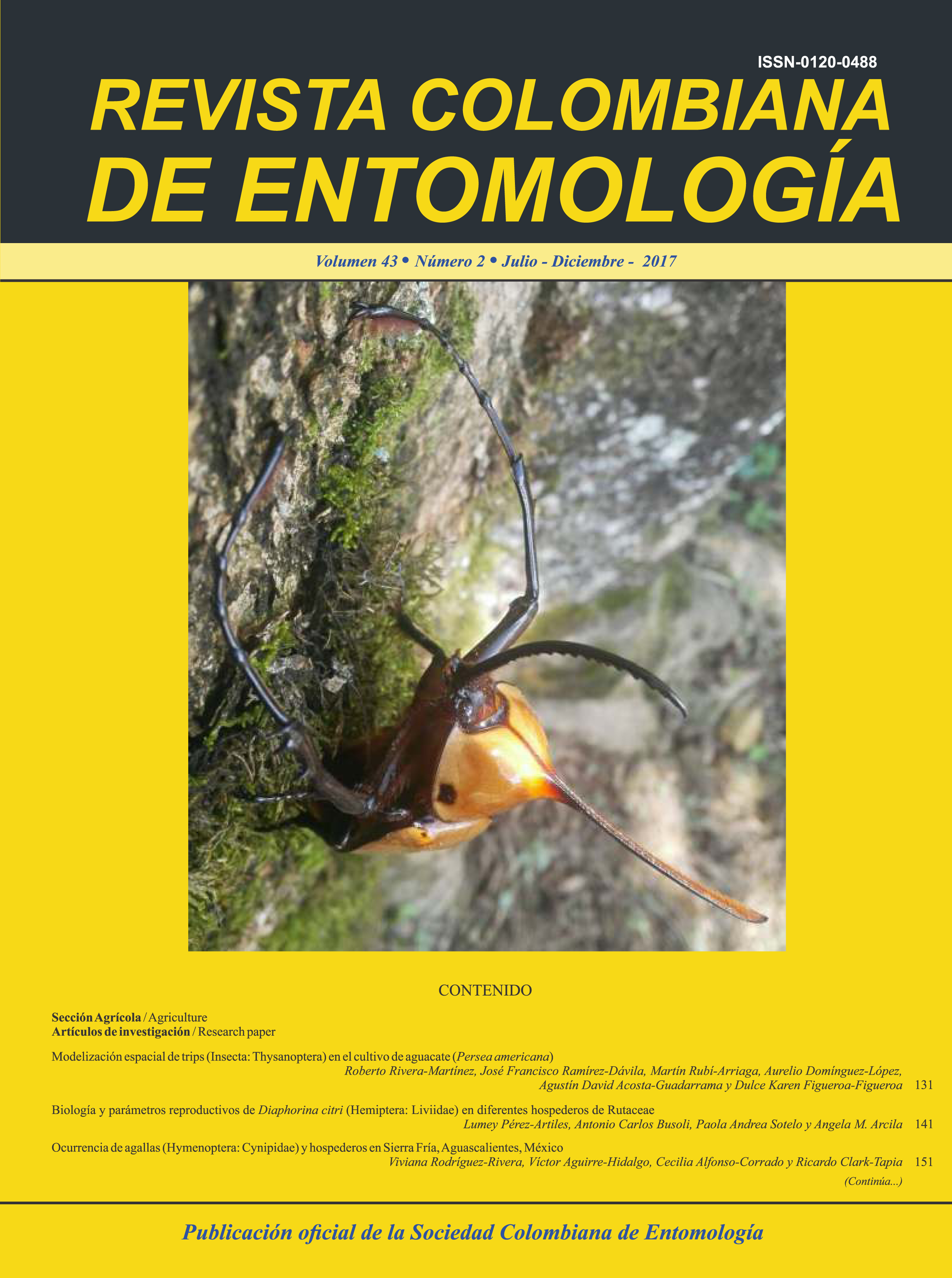Biology and damage of Conotrachelus crataegi (Coleoptera: Curculionidae) in tejocote (Crataegus spp.) in Mexico
Main Article Content
Conotrachelus crataegi is a curculionid pest that borer the fruits of the hawthorn in the production area of
Puebla, Mexico. Females lay eggs in small developing fruits, then the larvae auger to reach and destroy the seeds. This study was conducted due to the absence of research on the biology of and damage caused to fruits by this insect in the region. Samplings of foliage, fruits and soil were made in three locations in the Sierra Nevada of Puebla from April 30, 2014 to May 27, 2015. C. crataegi showed highly overlapping stages of development; eggs were observed from the third week of April to the second week of July 2014, with an estimated period of incubation of three to five days. Larvae were recorded throughout the sampling period from the first week of July 2014 until the last week of May 2015. The pupal stage occurred during the months of March and April 2014 and lasted between 10 and 15 days. Adults were seen from April to September 2014 with the highest population densities noted on May 28 and June 11, 2014. The results of this research will help in designing a program for the sustainable management of C. crataegi in Mexico.
- Martha Lilia Rosas-Alfaro, Arturo Huerta-De La Peña, Juan Morales-Jiménez, Andrés Pérez-Magaña, Luis Ricardo Hernández, Jesús Francisco López-Olguín, Biology and damage of Conotrachelus crataegi (Coleoptera: Curculionidae) in tejocote (Crataegus spp.) in Mexico , Revista Colombiana de Entomología: Vol. 44 No. 1 (2018)

This work is licensed under a Creative Commons Attribution-NonCommercial-ShareAlike 4.0 International License.
Authors retain the copyright on their work and are responsible for the ideas expressed in them. Once a manuscript is approved for publication, authors are asked for a publication license for the term of legal protection, for all territories that allows the use, dissemination and disclosure of the same.





